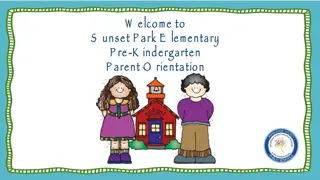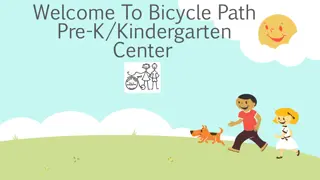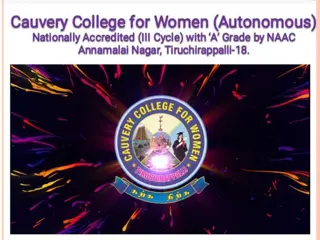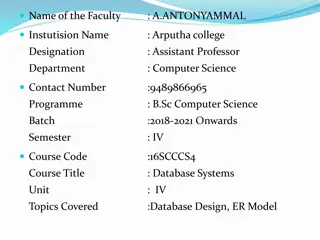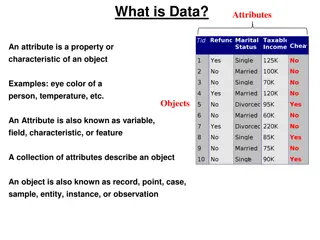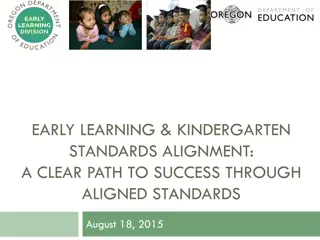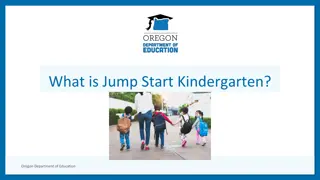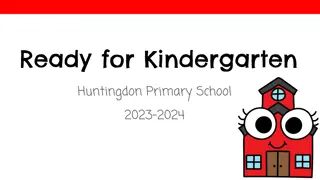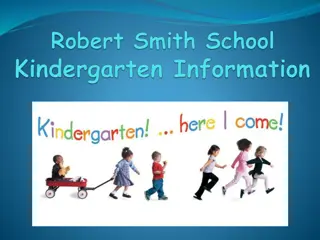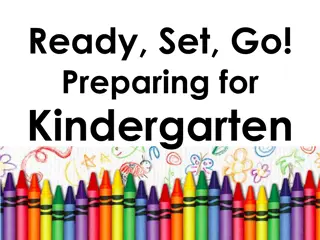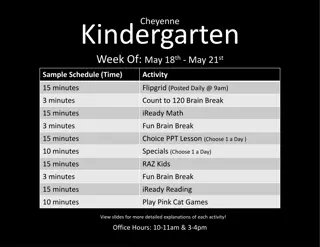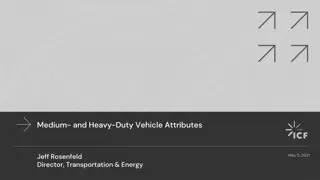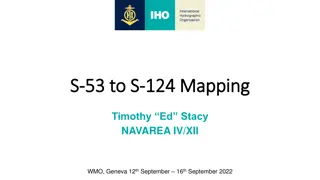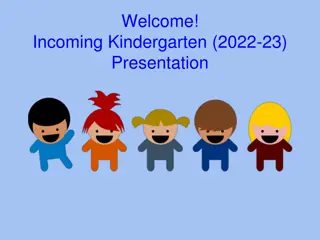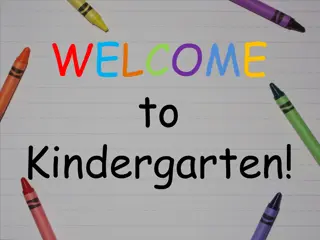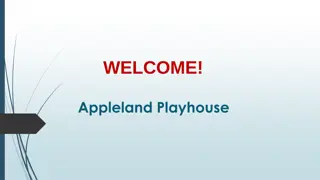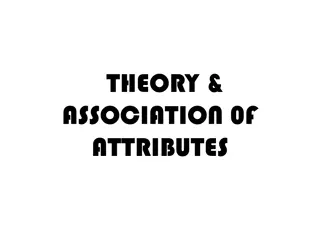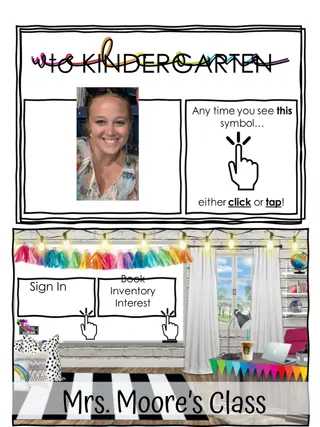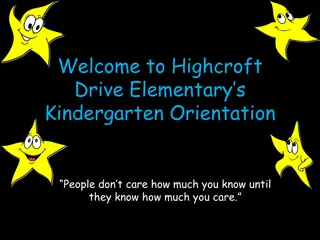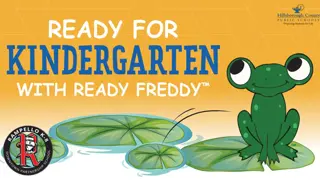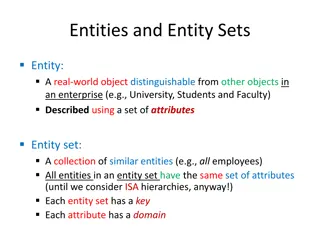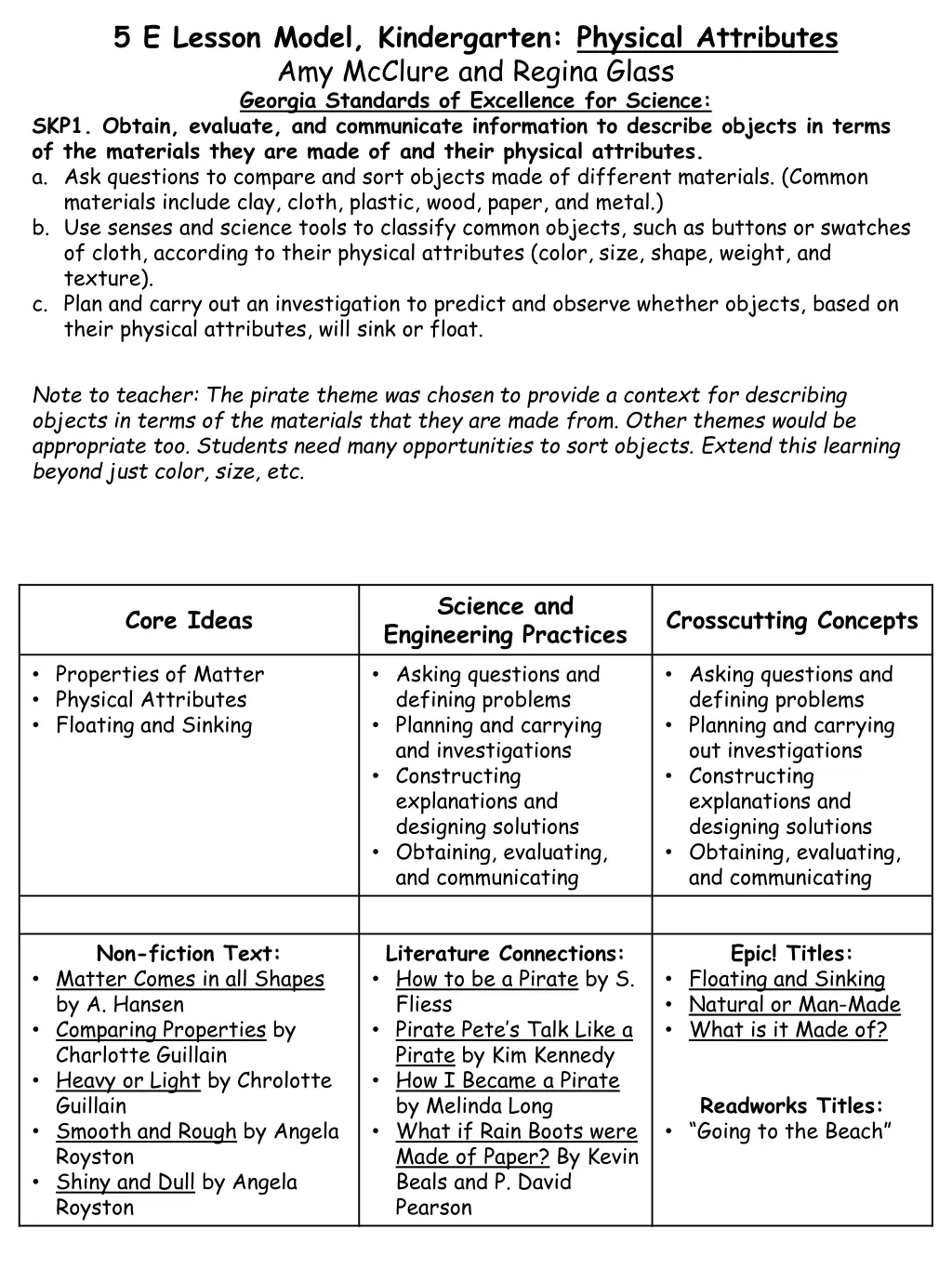
Exploring Physical Attributes Through Pirate Adventures
Dive into an exciting pirate-themed lesson for kindergartners focusing on exploring physical attributes of objects through material identification and buoyancy experiments. Students engage in hands-on activities, literature connections, and exploration stations to develop their understanding of properties of matter.
Download Presentation

Please find below an Image/Link to download the presentation.
The content on the website is provided AS IS for your information and personal use only. It may not be sold, licensed, or shared on other websites without obtaining consent from the author. If you encounter any issues during the download, it is possible that the publisher has removed the file from their server.
You are allowed to download the files provided on this website for personal or commercial use, subject to the condition that they are used lawfully. All files are the property of their respective owners.
The content on the website is provided AS IS for your information and personal use only. It may not be sold, licensed, or shared on other websites without obtaining consent from the author.
E N D
Presentation Transcript
5 E Lesson Model, Kindergarten: Physical Attributes Amy McClure and Regina Glass Georgia Standards of Excellence for Science: SKP1. Obtain, evaluate, and communicate information to describe objects in terms of the materials they are made of and their physical attributes. a. Ask questions to compare and sort objects made of different materials. (Common materials include clay, cloth, plastic, wood, paper, and metal.) b. Use senses and science tools to classify common objects, such as buttons or swatches of cloth, according to their physical attributes (color, size, shape, weight, and texture). c. Plan and carry out an investigation to predict and observe whether objects, based on their physical attributes, will sink or float. Note to teacher: The pirate theme was chosen to provide a context for describing objects in terms of the materials that they are made from. Other themes would be appropriate too. Students need many opportunities to sort objects. Extend this learning beyond just color, size, etc. Science and Engineering Practices Asking questions and defining problems Planning and carrying and investigations Constructing explanations and designing solutions Obtaining, evaluating, and communicating Core Ideas Crosscutting Concepts Properties of Matter Physical Attributes Floating and Sinking Asking questions and defining problems Planning and carrying out investigations Constructing explanations and designing solutions Obtaining, evaluating, and communicating Non-fiction Text: Matter Comes in all Shapes by A. Hansen Comparing Properties by Charlotte Guillain Heavy or Light by Chrolotte Guillain Smooth and Rough by Angela Royston Shiny and Dull by Angela Royston Literature Connections: How to be a Pirate by S. Fliess Pirate Pete s Talk Like a Pirate by Kim Kennedy How I Became a Pirate by Melinda Long What if Rain Boots were Made of Paper? By Kevin Beals and P. David Pearson Epic! Titles: Floating and Sinking Natural or Man-Made What is it Made of? Readworks Titles: Going to the Beach
Description Activity Phenomenon (Can be broken into more than 1 Day) Read the book, Pirate Pete s Talk Like a Pirate by Kim Kennedy. Discuss and ask questions. Youtube link available here: https://www.youtube.com/watch?v=wpq1aU3 q1P0 Teacher will draw a picture of a pirate ship. Have students recall some of the items that were on the pirate ship. Include as many as possible into the drawing. (making a model) Students will then participate in stations that will begin to build their interest in and asking questions about the properties of different materials. Stations are as follows (materials are in italics) 1. Sink or Float Center: Sensory bottles: Ocean (1/3 oil, 2/3 water, blue food coloring, beads), Beach (1/5 sand, 4/5 water, blue food coloring, seashells, beads), Plastic tub filled with water, random objects that sink or float, table cloth/towels Students will make observations and ask questions. 2. Observation Center Seashells of various textures, coins, faux jewels, magnifying lenses, rulers, balance, wand magnet, a few items that are aren t magnetic Students will make observations and ask questions 3. IPAD, (if available) Free App: Pirate s Adventure 4. Research Epic! Book titles, Readworks, Books Purpose is to generate student interest and get students asking questions. Engage As students explore stations, document their questions and their observations. Develop guiding question together: How can we describe different objects?
Description Activity Use the following question: How can we sort different objects? Read The Button Box. Youtube link is available here: https://www.youtube.com/watch?v=APY- JJ_6TPs Provide students a variety of buttons for sorting. Remind students all the different ways that the little boy sorted the buttons. Students can also play the game that was modeled in the book that he played with his grandmother. Continue offering many opportunities to sort objects by color, size, shape, weight, and texture. Scaffold this skill for your students and provide multiple opportunities. Sorting can also be a natural part of the day, such as clean up time. Purpose is to get students involved in the topic; providing them with a chance to build their own understanding Explore Once students have had many opportunities to sort, present students a variety of materials (spoons [both plastic and metal], balls, blocks, etc) and ask students to sort the objects based on the material of the object (what the object is made of). Ask: Which objects are made of different materials? After soring the objects, come together for a science talk and discuss their results. Facilitate the talk as Claims and Evidence. For example, one claim/evidence that students might make is as follows: The two spoons are different materials. (claim), because one is white and the other is silver (evidence). Have students provide other pieces of claims/evidence. Then, refer students back to the drawing of the pirate ship. Have students provide examples of objects that are made of different materials. Discuss. Facilitate questions. Based upon teacher observation, clarify any misconceptions or missing information by reading non fiction text from resources list. Purpose is to provide students with an opportunity to communicate what they have learned so far and figure out what it means. Explain
Description Activity Present students with materials from the above sort. Depending on students abilities, more items could be added. Can they sort those materials in a new way? Provide tools such as magnifying lenses, balance scales, rulers, wand magnet. Encourage students to use their senses as well (not taste) to sort the objects in a new way. Purpose is to allow students to apply their new knowledge and skills to a new situation Extend/ Evaluate Follow-up with a class discussion on how the objects were sorted, following claim/evidence framework. Purpose is to assess understanding through self, peer, or teacher evaluations Teacher observation If using science journals, students can draw 2 objects that are made of different materials and dictate to teacher how the objects are different. Evaluate Here s a great science station for centers if students need extra practice for sorting objects by material. A printable book is also included at the end of this power point with the other resources. There are 3 versions for differentiation if needed.
Description Activity Refer students back to initial phenomenon and any questions related to the sink/float station. Then, present the students with the following STEM challenge: Pirate Pete s Pirate ship has sunk to the bottom of the sea! He needs a new pirate ship so he can be on his way. Can you help Pirate Pete? Purpose is to generate student interest and get students asking questions. Engage Discuss the challenge and facilitate questions that will be needed to complete the challenge. Develop the following guiding question: Which materials will sink? Which materials will float? Provide a variety of materials. Present the materials to the students and have them make predictions on whether the object will sink or float. Document on chart paper or other method. Then ask the students: How can we set up an investigation to test to see if these objects will sink or float? Guide students through developing an investigation to test each item. Provide support and direction as needed. Purpose is to get students involved in the topic; providing them with a chance to build their own understanding Complete the investigation as a class, with partners, or in stations. Explore The following web addresses are interactive websites for exploring as well. In addition, non-fiction texts could be explored. http://interactivesites.weebly.com/float-or- sink.html This video provides an explanation on how a ship can float: https://www.youtube.com/watch?v=CvWrkx zCiaY
Description Activity Come back together as a class to discuss their findings. Can they make a claim based upon their evidence? What new questions do they have? **New investigations may need to be planned based upon questions. Readings and videos can be used to provide additional or clarifying information. Purpose is to provide students with an opportunity to communicate what they have learned so far and figure out what it means Explain Draw students attention back to the STEM challenge that was presented: Pirate Pete s Pirate ship has sank to the bottom of the sea! He needs a new pirate ship so he can be on his way. Can you help Pirate Pete? Explain to the students that they will be building a boat for Pirate Pete. They may choose one material for their boat from the following materials as well as masking tape: 1 sheet of aluminum foil 20 packing peanuts 1 sheet of bubble wrap 10 Popsicle sticks Cotton balls 2 pieces of paper Allow students to use their senses to make observations of the different materials. Document the observations. Ask: Which material do you think would make a good boat for Pirate Pete? Have a tub of water to allow students to make observations if the items will sink or float. In addition, manipulate the items in different ways (wad up the aluminum foil into a ball versus a flat sheet) so that they can observe the differences. Allow time to see what happens to the cotton ball once it absorbs the water. Discuss their observations and findings. Begin the Engineering and Design Process. A simple STEM journal is included. 1. Ask: What have you been asked to do? 2. Imagine: What individual ideas do you have? 3. Plan: Share your ideas with your group. 4. Build: Build your boats 5. Test: How many teddy bear counters can your boat hold? 6. Improve 7. Present Purpose is to allow students to apply their new knowledge and skills to a new situation Extend/ Elaborate
Description Activity Place students in groups of 3. Each child in the group will build their own boat. Build one boat at a time, partners will help each other build their boats. This will have to be modeled and encouraged. Give lots of praise to groups that are working well together. Modify this plan for any that are struggling. Test boats by counting how many teddy bear counters their boat can hold before it sinks. Document on chart paper. Extend/ Elaborate, cont. Teacher Observation STEM Challenge Purpose is to assess understanding through self, peer, or teacher evaluations If using science notebooks, an entry into their notebook about the investigation of sink/float with drawing and sentence dictation to teacher: Draw an item that sank. Draw an item that floated. Evaluate
Description Activity Refer students back to the original phenomenon of Pirate Pete and initial stations. Purpose is to generate student interest and get students asking questions. Explain to students that Pirate Pete once again needs their help. He has found a treasure box but is unable to tell what is in the treasure box because it is all mixed up. Can you help him separate the items in his treasure? Engage Present pairs of students a Ziploc bag filled with sand, metal washers, marbles, and cork. Ask students to use their eyes to make observations about the different objects in the bag. Purpose is to get students involved in the topic; providing them with a chance to build their own understanding Explore Students will draw the different parts of the treasure and discuss with their partner what they observe. Purpose is to provide students with an opportunity to communicate what they have learned so far and figure out what it means. Discuss as a class the different parts of Pirate Pete s treasure. List the parts on chart paper. What do they observe about each object? If needed, have a piece of cork, a marble, and a metal washer available for students to feel and make further observations. Document. Explain Present the students with the following materials: a sifter, a wand magnet, a small tub/aquarium filled with water. How can we use these materials to separate Pirate Pete s treasure? Allow students an opportunity to draw their ideas on how they could separate the treasure. Then, as a class, develop a step by step procedure for separating the items. Purpose is to allow students to apply their new knowledge and skills to a new situation Extend/ Elaborate
Description Activity Purpose is to allow students to apply their new knowledge and skills to a new situation Allow each group to separate the treasure and count how many of each object. Extend/ Elaborate If balance scales are available, have students use to measure mass of objects collected. Teacher observation Student drawing of how they separated the treasure. Make observations of how the students plan to separate the pirate treasure. Note the following: What observations did they make of the different materials in the treasure? Did they use the characteristics of the objects to separate the materials? Did they use the wand magnet to separate out the washers? Did they use the water to separate the cork to float? Did they use the sifter to separate the sand? Purpose is to assess understanding through self, peer, or teacher evaluations Evaluate Have students make observations of the pirate ship drawing/picture. Can they describe the ship and its objects by their physical characteristics?
Name:___________________________________________ Pirate Pete s Treasure Step 1: Pirate Pete has found some treasure. Use your eyes to make observations of what the different components or parts of his treasure are. Draw a picture of each part. Component 1: Component 2: Component 3: Component 4:
Name:_______________________________________________ Separating Mixtures It s now time to devise a plan to separate Pirate Pete s treasure. Consider the unique properties of each component and consider the tools available. Discuss a plan with your groups and write that plan in the space below. Our Plan:
Separating Mixtures Findings: Count to see how many of each item that you found. Record the numbers below. Cork: _________ Marble:_______ Washers:________ How many total items were in Pete s treasure? ______________ Draw a picture to show how you separated the treasure?

